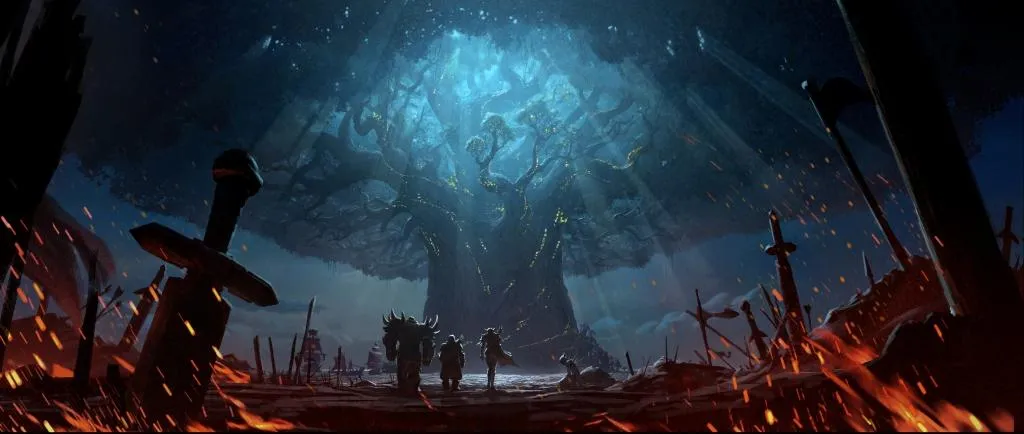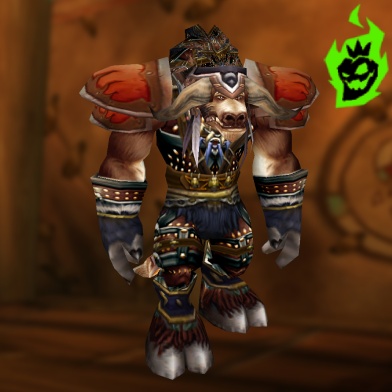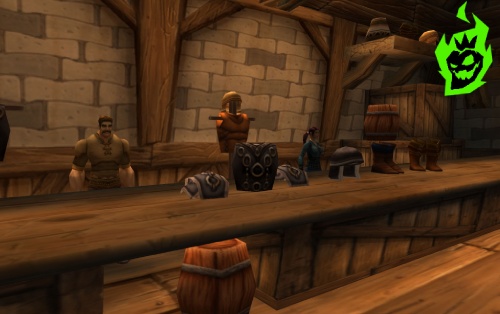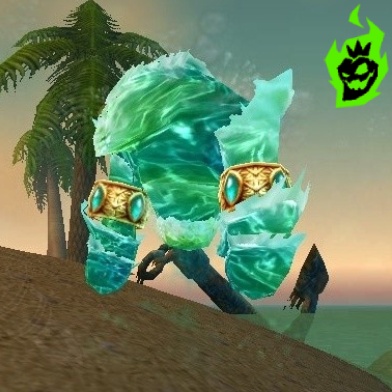WoW Classic Elemental Leatherworking Guide
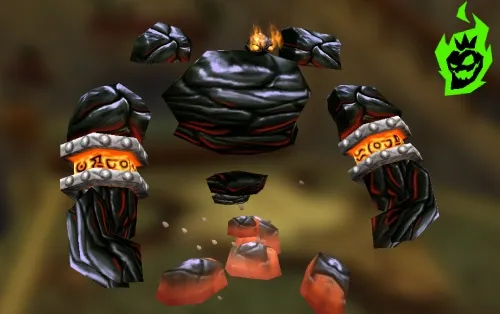
I’ve always been excited about the trip through Elemental Leatherworking in World of Warcraft Classic. You can become an expert in one of three leatherworking paths: Tribal, Dragonscale, or Elemental. This gives the game a new level of tactics. Through my adventures, I’ve found unique patterns, fought scary elementals, and gathered special materials that make strong gear come to life. If you choose the Elemental Leatherworker path, you can get great recipes for Rogues and Feral Druids. You can also make money if you like making things for the WoW Classic group as a whole.
Understanding Elemental Leatherworking in WoW Classic
To get better at Elemental Leatherworking, you need to do more than just learn recipes. The skill is mostly about gear that improves speed, damage in close combat, resistances to elements, and sometimes healing power. The pieces don’t always have standard main stats like stamina or agility, but they do have strong set bonuses and unique effects that are useful in raids and dungeons. Gathering Hearts of Fire, Globes of Water, Cores of Earth, and Breath of Wind from elementals all over Azeroth is a big part of this skill.
Here is a short table that lists the main elemental reagents for this specialty, along with some ideas for where to farm them. There are a lot of recipes that use these ingredients, and they often sell at good prices in the Auction House.
| Reagent | Zone/Location Example | Drop Source | Approx. Drop Rate |
|---|---|---|---|
| Heart of Fire | Un’Goro Crater, Searing Gorge | Fire Elementals | ~5% |
| Globe of Water | Azshara, Feralas | Water Elementals | ~4% |
| Core of Earth | Badlands, Winterspring | Earth Elementals | ~5% |
| Breath of Wind | Silithus, Thousand Needles | Air Elementals | ~4% |
It takes some grinding to get these reagents, but I’ve found it satisfying to slowly collect them while leveling up or helping friends with world quests. When you are trying to get the more difficult recipes in the Molten series, Hearts of Fire and Cores of Earth are very important. In order to get these things, I’ve had to explore hidden areas, fight elite elementals, and even find random rare spawns that drop extra gear.
Becoming an Elemental Leatherworker
To start the Elemental Leatherworking path, you need to be level 40 and have at least 225 experience in Leatherworking. In the Arathi Highlands, Horde players meet Brumn Winterhoof, while Alliance players go to Searing Gorge to find Sarah Tanner. To finish the quest for specialization, you need to submit the necessary elemental reagents we talked about earlier. This was easy for me because the quest requires two of each of the four core elemental things, which I had already prepared.
Here is a table with the requirements and addresses of the trainers for those who want to go this route:
| Faction | Trainer Name | Location | Requirements |
|---|---|---|---|
| Horde | Brumn Winterhoof | Arathi Highlands | Level 40 & LW 225 |
| Alliance | Sarah Tanner | Searing Gorge | Level 40 & LW 225 |
When you finish the specialty quest, Elemental Leatherworking gives you access to a group of recipes that give strong bonuses, which are especially useful for Rogues and Feral Druids. As you learn more about the specialization, you’ll find secret patterns all over Azeroth. Some of them have drop rates as low as 1%. Because of that challenge, each new recipe feels like a real achievement.
Crafting the Living Set
What I did with the Living Set stands out. This set’s gear is mostly for Resto Druids, but anyone who wears leather and focuses on healing might want to look at it. Around level 55, each piece can be used, giving players who are working their way through late-game content a choice. The set has things that are good at healing, don’t get damaged by nature, and work well together for leveling and getting ready for a raid.
Here is a short list of the Living Set pieces and where they can be found:
- Living Shoulders – Purchased from leatherworking supplies vendors in Feralas (Horde: Jangdor Swiftstrider, Alliance: Pratt McGrubben).
- Living Leggings – Dropped by Deadwood Shamans in northern Felwood at a drop rate near 2%.
- Living Breastplate – Dropped by Decaying Horrors in Weeping Cave, Western Plaguelands, at around a 1% chance.
I’ve been to faraway caverns and tough off-path grinds in search of these things. The Deadwood Shaman farming way in Felwood was easy because there are a lot of shamans there, but the Decaying Horror stretch made me wait a long time. I always grab the Living Breastplate pattern as soon as I see it on the Auction House, because that recipe is still very rare and sells for a lot of gold.
Forging the Stormshroud Set
The Stormshroud Set interested me because it works well together to increase the chance of a critical hit, the chance to dodge, and even the chance to do extra nature damage with physical attacks. Since these pieces don’t directly improve stamina or agility, they work best when worn with the rest of the set, which gives Rogues and Feral Druids stacked set benefits. The combined critical strike and nature damage procs in this collection might be useful for people who want to deal a lot of damage quickly.
A breakdown of the Stormshroud Set pieces is below:
| Item | Source Location | Approx. Drop Rate | Notable Set Bonuses |
|---|---|---|---|
| Stormshroud Armor | Arkkoran Oracles, Azshara | ~2% | +2% Crit (part of set bonus) |
| Stormshroud Shoulders | Son of Arkkoroc, Bay of Storms | ~5% | +1% Hit (part of set bonus) |
| Stormshroud Gloves | Wind Reaver (Silithus), Princess Tempestria (Winterspring) | ~20-31% | 2% Chance of 1 additional Energy (part of set) |
| Stormshroud Pants | Vendor in Western Plaguelands (Horde/Alliance) | Respawns every few days | +3% Dodge (part of set bonus) |
To find these patterns, you had to go from the coast of Azshara to the icy woods of Winterspring, wait for elemental invasions, and camp with the vendor in the Western Plaguelands. The plan for the gloves recipe is less stable, but I’m still excited about the chance to get those pieces. When I’m with a group, seeing the Stormshroud procs chain together is especially exciting. It reminds me why I like how different WoW Classic’s older features are.
Assembling the Volcanic Set
The Volcanic Set is mostly about having a high resistance to fire and an extra chance to give fire damage when hit in melee. People who have these things are more likely to go into Molten Core or other places where fire does a lot of damage. The set may not have normal stat distribution, but it could be helpful in the short term for people who need specialized resistance gear. When wearing multiple pieces at once, the synergy is increased, making the character a strong fighter against fiery enemies.
The Volcanic Set recipes are shown below in a table:
| Item | Primary Source | Zone/Mob | Approx. Drop Rate |
|---|---|---|---|
| Volcanic Leggings | Firegut Brutes | Burning Steppes (Caves near Dreadmaul Rock) | ~4% |
| Volcanic Shoulders | Firebrand Legionnaires | Lower Blackrock Spire | ~23% |
| Volcanic Breastplate | Firebrand Grunts | Lower Blackrock Spire | ~5% |
In Lower Blackrock Spire, drops sometimes show up in groups, which is why I always queue with the same group to hunt these mobs. I went deep into the caves in the Burning Steppes that were full of Firegut Brutes, but it took a long time. Being able to make multiple copies of these things also makes it possible to resell enchanting material, especially if the parts that have been de-enchanted sell for a good price.
Rare Elemental Recipes and Where to Find Them
There are some secret gems in Elemental Leatherworking that you can find by exploring. If you want to buy styles like Stormshroud Gloves or Shifting Cloak, you’ll have to pay a lot at the Auction House. If you want to get everything yourself, you need to be patient, especially since these things only drop 1% to 5% of the time. Random finds can happen when you’re raiding or doing group quests, but most of the time, the safest way is to farm and hop from vendor to vendor.
Here is a short list of some of the most interesting rare Elemental patterns:
- Stormshroud Gloves – Dropped by unique elemental bosses in Silithus or Winterspring.
- Shifting Cloak – Found in Dire Maul North’s Knot Thimblejack’s Cache (~2% drop chance).
- Molten Helm – Purchased from Lokhtos Darkbargainer inside Blackrock Depths at Friendly with the Thorium Brotherhood.
- Molten Belt – Purchased from Lokhtos Darkbargainer at Revered with the Thorium Brotherhood.
Each of these types gives gear that sells well or has stats that are useful in certain situations. When I farmed in Dire Maul North for the Shifting Cloak pattern, I got a lot of ogre loot, sometimes fame boosts, and the thrill of maybe finding a world drop pattern. In WoW Classic, these pieces are still worth something whether you make them or trade them.
Shifting Cloak, Molten Belt, and Molten Helm
Some classes’ elemental and defense stats get better when they wear things like the Shifting Cloak, Molten Belt, and Molten Helm. Shifting Cloak is popular among tanks because it gives them an extra 1% dodge. Other classes may also pick it up for a small defense boost. Molten Helm is known as the best helmet for Rogues and Feral Druids who are moving into Molten Core in terms of fire resistance. Molten Belt, on the other hand, gives both agility and fire resistance.
The table below shows three important recipes for advanced Elemental Leatherworking:
| Item | Notable Stats | Reputation/Location | Usage |
|---|---|---|---|
| Shifting Cloak | +1% Dodge, +7 Agility | Dire Maul North (Knot Thimblejack’s Cache) | Top-tier avoidance for tanks |
| Molten Helm | +20 Fire Resist, +15 Agility | Lokhtos Darkbargainer (Friendly, BRD) | Strong FR option for melee |
| Molten Belt | +25 Agility, +10 Fire Resist | Lokhtos Darkbargainer (Revered, BRD) | Hybrid of FR and agility |
It might take a while to become Friendly and Revered with the Thorium Brotherhood. It’s good for your character to turn in Dark Iron Residue, Core Fragments, and other quest items. When I’ve done enough runs to gather enough materials, I usually enjoy crossing the barrier to buy new recipes. Making these unique items for guildmates or selling them on the Auction House has been a steady way for me to get gold when other markets are slow.
Thoughts on Elemental Leatherworking
As an Elemental Leatherworker, my job has taken me through dungeons, active elemental invasions, and quiet areas of Azeroth to find trends that are hard to pin down. Every piece in the collection has its own story, even though not everyone buys the whole thing. Some recipes can be obtained from bosses that respawn every day, others from certain sellers with restocking times that last several days, and some require tricky reputation grinds.
Here is a table that lists some of the most important things about Elemental Leatherworking:
| Focus | Example Items | Rarity Level | Potential User Base |
|---|---|---|---|
| Fire Resistance | Volcanic Set, Molten Helm | High | MC raiders, FR gear collectors |
| Healing Utility | Living Set | Moderate | Resto Druids, support roles |
| Melee DPS Boost | Stormshroud Set | High | Rogues, Feral Druids |
| Rare Patterns | Shifting Cloak | Very High | Tanks, advanced crafters |
Using these things in raids or dungeons has shown me how stats affect how the game is played. The fact that you can see a Feral Druid wearing a Living Set and a Rogue wearing a Stormshroud shows how many different builds are possible in WoW Classic. My own experience with the Molten Belt and Molten Helm has helped me escape boss fights with fire and sometimes do a lot of damage to creatures that are on fire.
Putting time into Elemental Leatherworking is a rewarding task for WoW Classic fans, completionists, and people who like unique gear. Finding patterns and gathering items are both parts of the process that require planning and patience. But the satisfying feeling of making unique gear for other explorers or wearing it yourself makes this specialty one of the most interesting parts of the leatherworking job.
